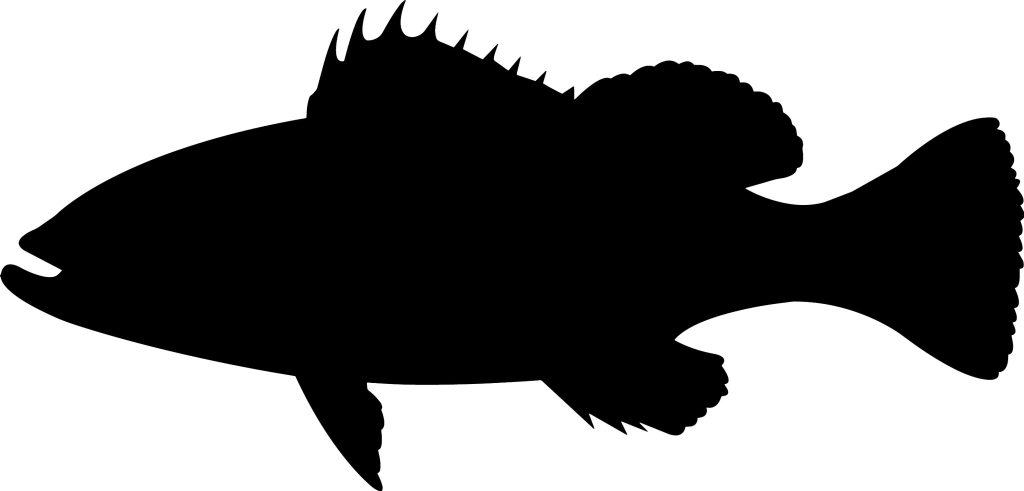Nassau grouper is a species of groupers who are perciform fishes from the family Serranidae. The scientific name of this fish is Epinephelus striatus. These groupers mature late but have a long average lifespan, and they are also considered to be top-level predators in the aquatic food chain. However, they have currently considered an endangered species due to becoming victims of bycatch and overfishing.

Where do Nassau groupers live?
The Nassau grouper, like most other species of grouper, lives in the sea near reefs. They generally hang around shallow reefs but can also be found in depths up to 426 feet. However, these groupers transition as they mature and shift to different locations at different times.
As larvae, they are planktonic and stay near aquatic plants. As juveniles, they are usually found in the nearshore, shallow waters within macroalgal and seagrass habitats. Once they gain maturity, they migrate into deeper waters. Which is to say, they shift to predominantly reef habitats like fore-reefs and reef crests.
They are spread all over the tropical and subtropical waters of the western North Atlantic, which includes Bermuda, Florida, the Bahamas, and the Yucatan Peninsula. It also covers the entire Caribbean, from Brazil in the south to Venezuela on the eastern coast. Some verified reported sightings of Nassau grouper in the Gulf of Mexico at Flower Gardens Bank or, most notably, along the coast of Belize.
Nassau groupers typically spend much time in one location, frequently on rocks or coral reefs with high topography in shallow water. Greater vertical relief and deeper reef habitats are typically home to larger fish. Adults and juveniles will utilize both natural and artificial reefs. Their habitat is influenced more by the water clarity, habitats, and benthos than their diet, which is extremely varied.
What does a Nassau grouper look like?
The Nassau grouper is medium to large in size and has a robust body. They can grow up to over a meter in length and weigh as much as 25 kg. They are built with thick bodies and large mouths to pull in (or inhale) their prey.
The coloration of a Nassau grouper may vary depending on the fish’s circumstances, habitat, and environment. For example, the grouper assumes a tawny color in shallow waters, as in down to 60 feet or so, but move down a bit deeper, and their body becomes pinkish or red in color, sometimes orange.
Over the body color, they have several light stripes. There are also darker spots, bars, and patterns, including black spots, below and behind the eye and a forked stripe on the top of the head.
Nassau groupers have bright vertical bars throughout the head and body and are predominantly reddish brown in color throughout most of the year. However, when mating, males turn black on top and white below, while females almost completely turn black.
Is fishing for Nassau grouper allowed?
Nassau grouper used to be one of the most common species of grouper in the United States. It was easy for commercial and recreational fishermen to catch Nassau grouper at that time. This fish is also one of the most important groupers for the West Indies commercial fishery, and this is exactly why fishing Nassau groupers went overboard, and now they are an extremely endangered fish as a result of overfishing.
One of the factors causing Nassau groupers to come closer and closer to extinction is the fact that they are slow breeders. To add fuel to the fire, the historic spawning areas of this fish are easily targeted for fishing, which tends to remove the reproductively active members of the group. This happens because Nassau groupers spawn in an aggregation like most other groupers. This means thousands gather at a favorite spot during the spawning season for reproductive purposes.
Due to recreational and commercial fishing, as well as the loss of reefs, the International Union for Conservation of Nature classified the Nassau grouper as critically endangered. In federal waters in the US, fishing for the species is not allowed. The Nassau grouper is an endangered species that the US National Marine Fisheries Service is working on listing under the Endangered Species Act.
In recent years, the governments of the Bahamas, Cayman Islands, and the United States have prohibited or implemented restrictions on the fishing of Nassau grouper. Fishing in grouper spawning holes has been prohibited in the Cayman Islands until the end of 2016. In the Bahamas, fishing for Nassau grouper is prohibited from December to February due to a closed fishing season established by the government. It is declining at a rapid rate and faces a real threat of being extinct.
Amidst the varied regulations imposed, it’s obvious that fishing for Nassau groupers is not only difficult but also discouraged. Instead, there are many other grouper species that aren’t at the risk of extinction that fishermen can go after.
Is Nassau grouper edible?
Yes, they are. In fact, this fish is considered one of the most important food fish throughout the Caribbean and in the West Indies. People enjoyed their mild taste, oily flesh with a faintly sweet undertone. Things have changed now that they are an endangered species, but the flesh of this fish was enjoyed by many at some point.
The flesh of Nassau groupers is primarily marketed as fresh. However, there is a risk associated with eating Nassau groupers, or just groupers in general. And it is mercury poisoning, otherwise known as ciguatera poisoning. Since groupers’ bodies are filled with mercury, it’s not encouraged to eat them too frequently. There have been multiple reports of ciguatera poisoning from the consumption of Nassau groupers.
In conclusion, fishing for Nassau groupers might seem tempting because they come with a challenge, but it’s also our responsibility to put effort into preserving endangered species and retaining marine biodiversity.











Pingback: Difference Between Grouper and Amberjack | Reel Fishing Guru
Pingback: Differences between Grouper and Pollock | Reel Fishing Guru
Pingback: What Is the Difference Between Grouper and Bluefish? | Reel Fishing Guru
Pingback: What Is the Difference Between Grouper and Skate? | Reel Fishing Guru
Pingback: What is a Yellowfin Grouper? | Reel Fishing Guru
Pingback: What Is the Difference Between Grouper and Wahoo? | Reel Fishing Guru
Pingback: Do Grouper Sleep? | Reel Fishing Guru